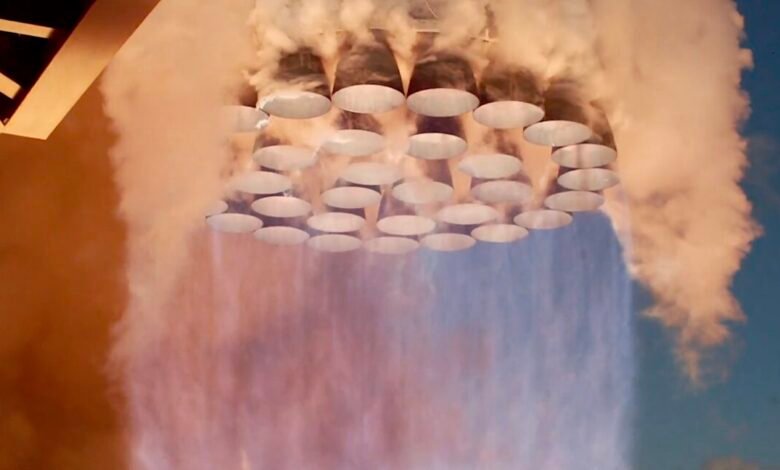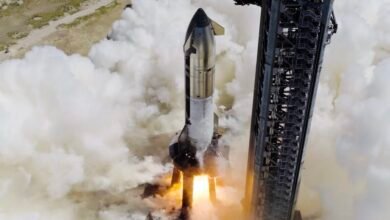SpaceX’s Starship V2 Achieves Crucial Breakthrough

▼ Summary
– SpaceX successfully completed its eleventh Starship test flight, achieving a near-perfect mission from South Texas to the Indian Ocean.
– The rocket generated approximately 16.7 million pounds of thrust, making it the most powerful rocket ever flown.
– This flight was SpaceX’s most successful Starship test to date, meeting all objectives and providing valuable data for future development.
– The Super Heavy booster was guided to a precise splashdown in the Gulf of Mexico, validating a new multi-stage engine configuration for landing.
– An engine malfunction occurred early in the booster’s descent but had no impact on the overall success of the flight.
SpaceX has successfully concluded a pivotal test flight for its Starship rocket, marking a significant step forward in the development of its next-generation launch system. The mission, which launched from South Texas and concluded with a splashdown in the Indian Ocean, delivered on nearly all of its planned objectives, providing engineers with a wealth of new data.
At 6:23 pm Central Daylight Time, the colossal stainless steel vehicle ignited its 33 methane-fueled Raptor engines, generating a staggering 16.7 million pounds of thrust. This immense power lifted the 404-foot-tall rocket from the Starbase facility, initiating a journey that would take it halfway across the globe. The flight proceeded with remarkable precision, executing its complex sequence of maneuvers as intended.
This eleventh integrated test flight is widely considered the program’s most successful demonstration to date. While a previous mission last year successfully caught the Super Heavy booster after a high-altitude flight, this latest endeavor achieved far more in terms of orbital trajectory and system validation. A company statement confirmed that the flight “reached every objective, providing valuable data as we prepare the next generation of Starship and Super Heavy.”
Although SpaceX did not attempt to recover the Super Heavy booster on this occasion, the mission did include a critical test of its guided descent. The massive first stage, which had been flown on a previous mission in March, executed a complex landing burn sequence. It successfully validated a new engine configuration, reigniting 13 engines initially before scaling down to five and finally three for a controlled splashdown in the Gulf of Mexico.
The flight was not entirely without incident, as telemetry data suggested one of the Super Heavy’s engines may have failed early during its descent. However, this anomaly had no effect on the booster’s overall performance or the success of the mission’s primary goals. The near-flawless execution of this test represents a crucial breakthrough for the Starship program, bringing the fully reusable launch system closer to operational reality.
(Source: Ars Technica)





